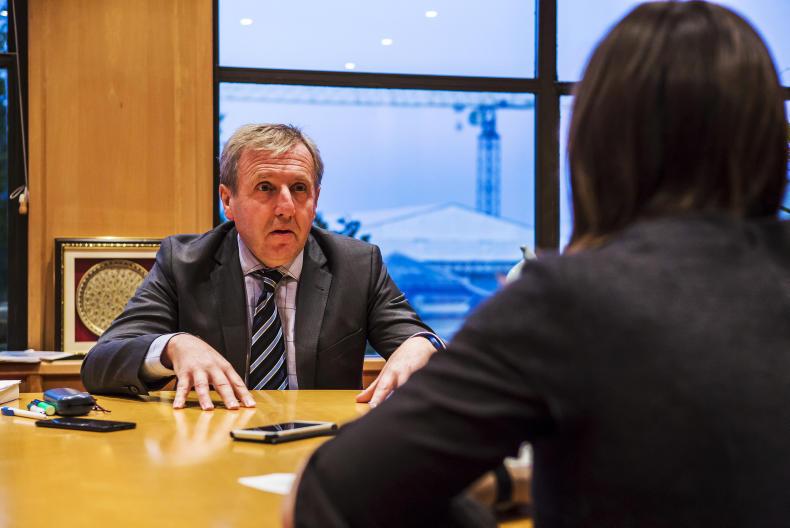It’s hard not to feel optimistic when there is a hint of spring in the air, and the weather for the first week of the year has been heartening. Underneath that, however, there is an unease in farming that is palpable, and unfortunately fully justified.
Farmers endured a costly year in 2018, and its shadow hangs over the present.
The banks keep saying they have not experienced significantly higher demand for facilities from farmers.
The nagging feeling is that this is because farmers are concerned with keeping existing lines of credit open, and it is smaller creditors who are being squeezed by the cashflow crunch.
It stands to reason that with elevated costs elevated, and sluggish incomes, if borrowings are not increasing, bills are not being paid off and are mounting.
In this context, the late appearance of the low-interest loan fund is unacceptable.
It is now 457 days since Minister for Agriculture Michael Creed first announced funding for a second low-interest fund, following the massive over-subscription for the first one in early 2017.
He did say it would be different in some respects from its predecessor.
The money would be leveraged to produce a bigger fund, so a higher interest rate would be applied. Instead of cashflow, capital spending would be targeted.
It was belatedly announced for early 2019 during last October’s budget, but now there are stories of further legislation being necessary, and more delays.
This week, Ministers Humpreys and Creed promised the loans by March.
It is just the latest in a number of deadlines mooted by the Government at a time when farmers are starved of cash.
Many recent TAMS applicants are waiting anxiously for the scheme to open up so they can source matching funds from it.
Small businesses
The decision to first roll out the Brexit low-interest fund for small businesses had a logic to it, but there is still a very slow take-up of it – only €12m of the €300m has been drawn down to date.
There is a school of thought that farmers need to batten down the hatches and not invest more money until we at least see the shape of Brexit.
If that is the case, two things need to happen – firstly, scrap Food Wise 2025 and its expansionary targets for farm production, and secondly roll out the low-interest loan immediately as a cashflow instrument.
There are only 78 days left to 29 March – Brexit day.
The low-interest loan fund is desperately needed.
It’s 93 days since the second Budget promising its delivery. And farmers are still waiting.
